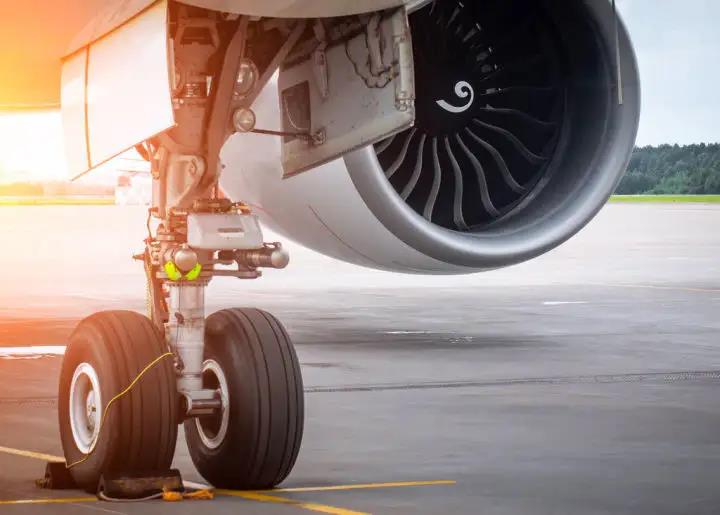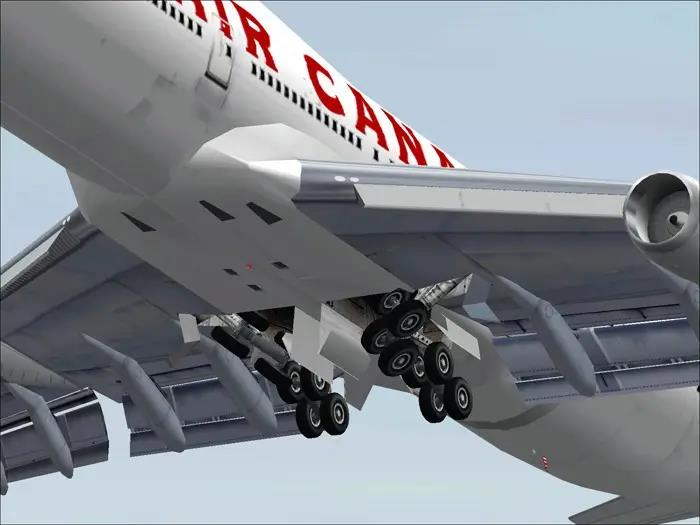The main manufacturing technology of landing gear



1. Manufacturing of ultra-high-strength steel parts for landing gear
300M steel is a mature aviation structural steel material. Most of the main load-bearing components of modern aircraft landing gear, such as the outer cylinder, piston rod, and wheel axle, are made of 300M steel.
After heat treatment and strengthening of 300M steel, the tensile strength reaches 1960~2100MPa (HRC52~56), which is 22.4% higher than that of 30CrMnSiNi2A, but 300M steel is more sensitive to stress concentration and stress corrosion, so it has higher requirements on the manufacturing process .
Although the processing technology of 300M steel landing gear parts is relatively mature, in view of the actual situation of large aircraft landing gear parts, it also involves the application of some key technologies, including:
(1) Forging technology for large-scale forgings such as outer cylinder and piston rod.
It is mainly necessary to optimize the billet making, forging process, physical and chemical properties testing of forgings, ultrasonic flaw detection of forgings and other technologies in the forging process of large 300M steel forgings to meet the requirements of long-life and high-reliability forgings for large aircraft.
(2) High-efficiency CNC machining technology for super-large landing gear parts.
On the one hand, all surfaces of the 300M steel forging blanks must be processed with a large amount of CNC "skinning", and the amount of material removed from the inner hole cavity is huge.
On the other hand, as 300M steel components, they are all important stress components on the landing gear. The shape and structure of the parts are quite complex and the material removal rate is high.
Therefore, for the machining of super-large parts of large aircraft landing gear, the workload is particularly prominent, and it is necessary to improve the efficiency of CNC machining.
(3) Vacuum heat treatment and deformation control technology for large parts.
Heat treatment is an indispensable means of strengthening in the machining process of landing gear parts. Special attention should be paid to the strengthening effect of heat treatment, increase and decarburization control, and deformation control of large main bearing components of the landing gear.
(4) Low hydrogen embrittlement electroplating and new high-performance surface protection technology.
At present, 300M steel and other ultra-high-strength steel landing gear parts are widely used for the surface treatment of non-matching surfaces are cadmium-plated or cadmium-plated titanium; the mating surface with relative movement is generally protected by electroplating hard chrome layer.
These electroplating process control is very important, especially hydrogen embrittlement control.
2. Manufacture of titanium alloy parts
Considering the high specific strength, low stress sensitivity and corrosion resistance of titanium alloys, as the application trend of aircraft landing gear structure selection, the use of titanium alloys will be more extensive.
Therefore, titanium alloy parts manufacturing technology is one of the key technologies in the development and production of large aircraft landing gear.
At present, the application of titanium alloy components on landing gear in China is still in the early stage. There is not much accumulation of large-scale application practice, and the technical reserves are not sufficient. Some key process technologies should be paid attention to, including:
(1) Preparation of large-scale titanium alloy blanks and integral die forging process of parts;
(2) Heat treatment process;
(3) Inspection and control technology for burns on cutting surfaces;
(4) Surface strengthening process, etc.
3. Deep hole machining of landing gear parts
Deep hole machining technology is the key and difficult point of landing gear manufacturing. Parts such as the front of the aircraft landing gear, the main lift piston rod, the outer cylinder, and the axle are all slender cylindrical parts, and most of the materials are ultra-high-strength steel and titanium alloys, which are all difficult-to-cut materials.
During the cutting process, the tool wear is quite serious, especially when the deep and long hole parts are processed by ordinary turning processing methods, the inherent defects of insufficient tool shank rigidity and low tool durability are difficult to meet the processing requirements of parts, dimensional accuracy, surface roughness ( Especially the transition fillet and transition R) are not easy to guarantee.

